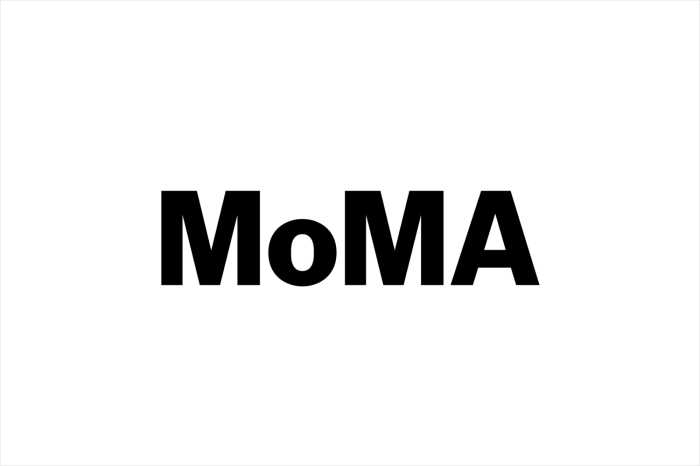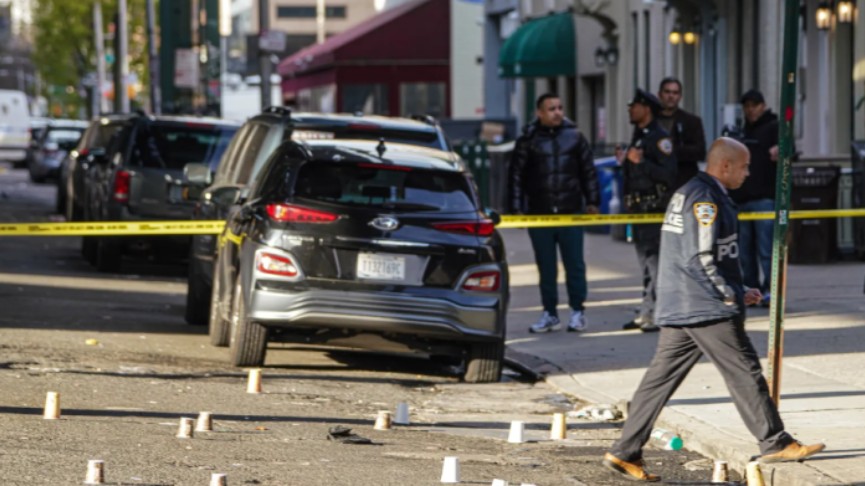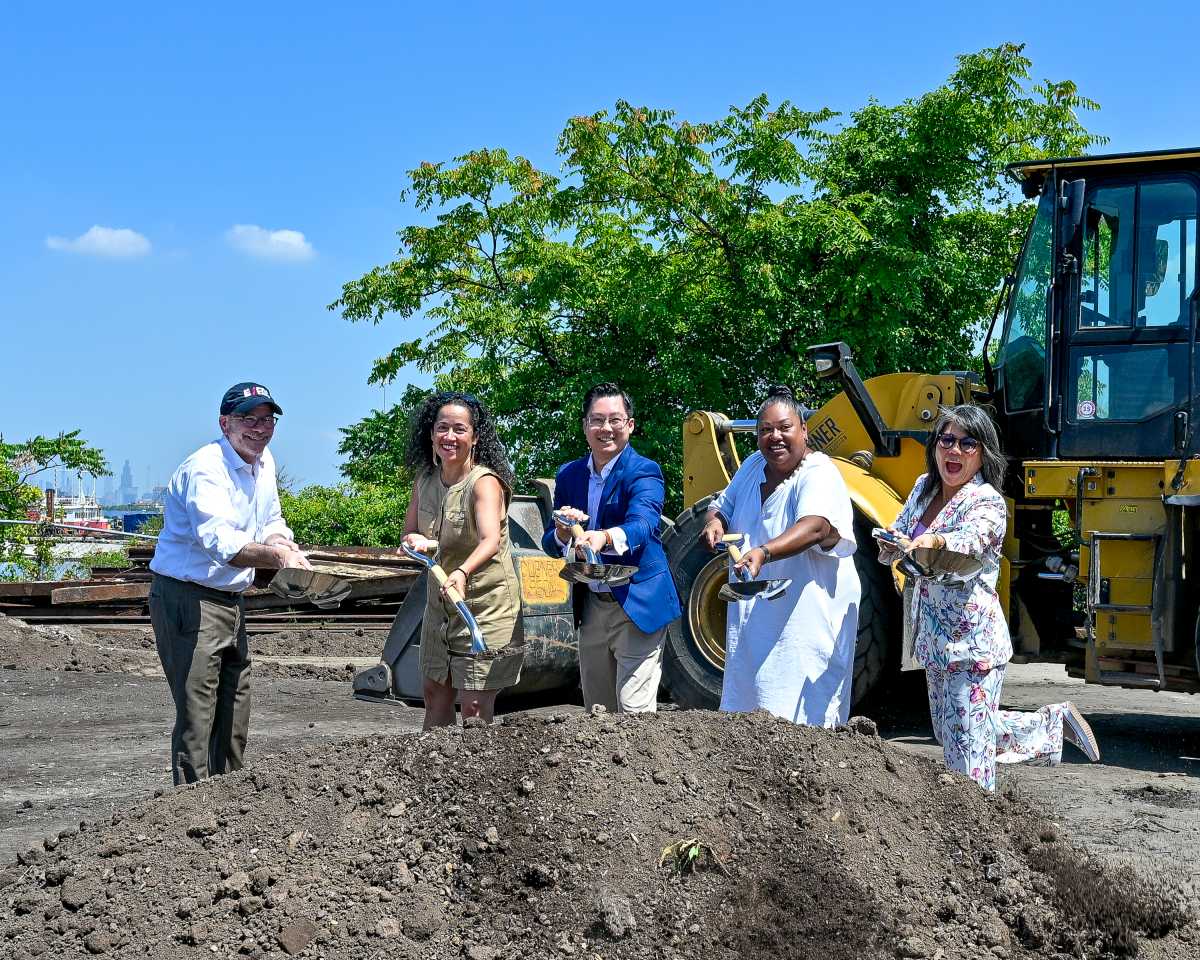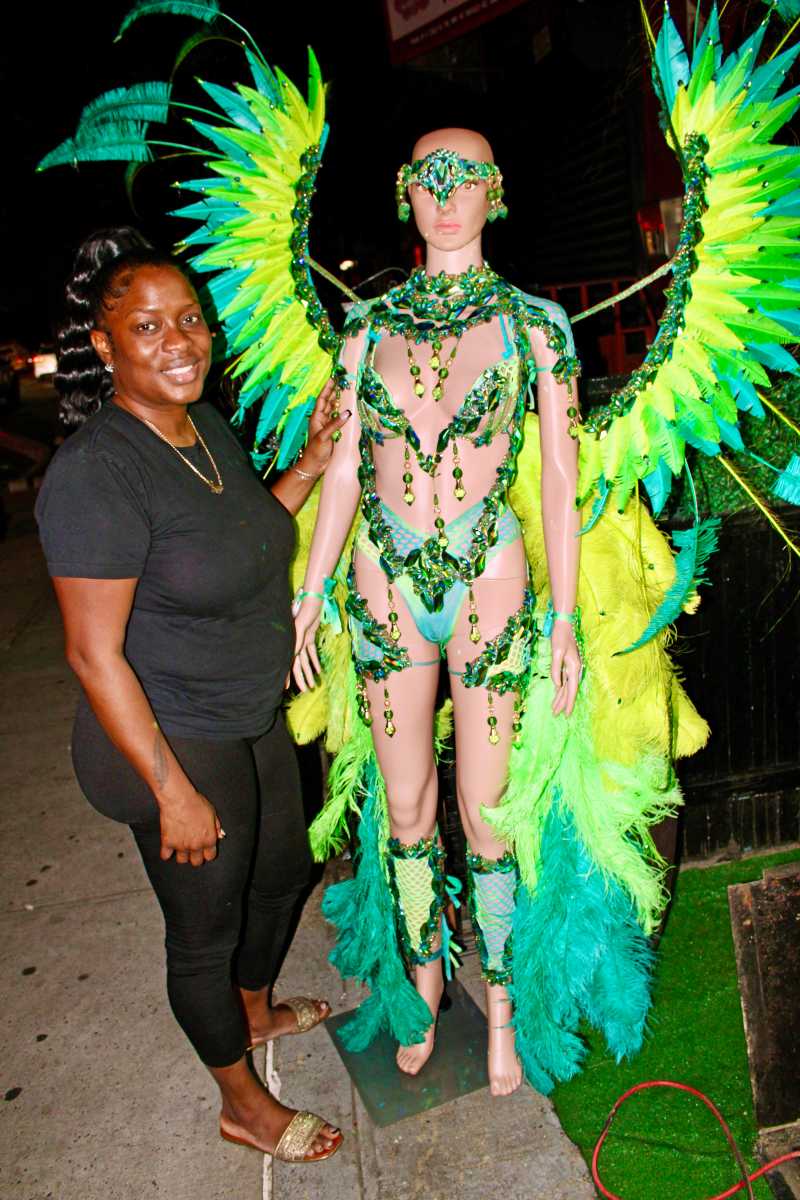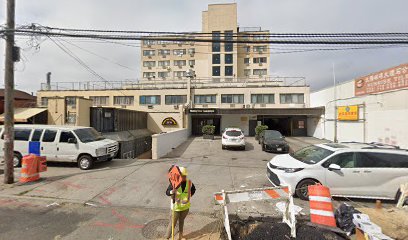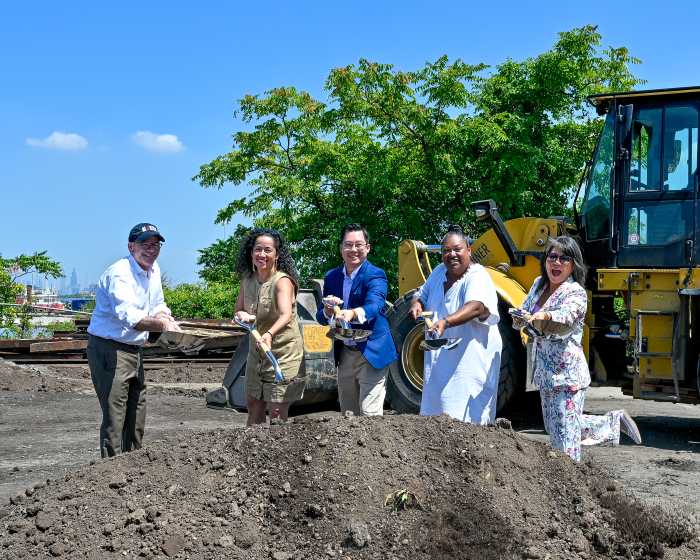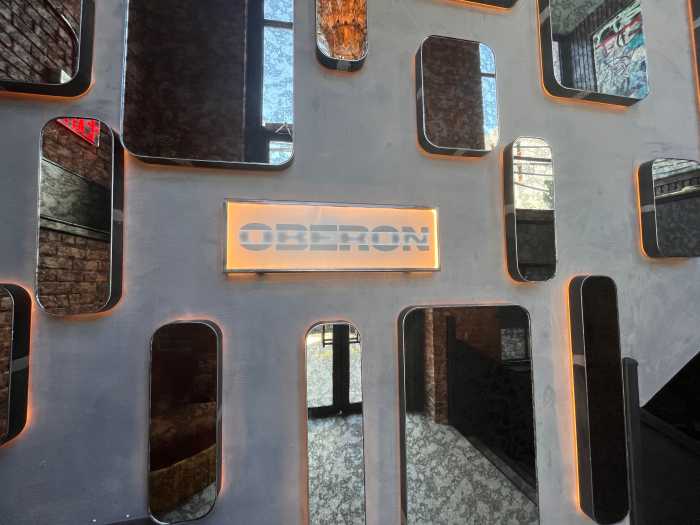By Lincoln Anderson
A year ago, when the news broke that the Catholic Archdiocese planned to demolish its Trinity Chapel at New York University, the university was quick to quash any speculation that it was interested in the prime property on the south side of Washington Square Park.
The university’s position then was unusual, but not surprising, especially considering the torrent of criticism N.Y.U. had recently taken from the community over the construction of its new Kimmel Center and Law School building — two large edifices that significantly bulked up the mass of architecture looming over the south side of the square.
But last Wednesday, John Sexton, N.Y.U.’s president, in an exclusive interview, told The Villager that, to the contrary, N.Y.U. is now extremely interested in the N.Y.U. Catholic Center, and, in fact, is close to reaching a deal with the archdiocese to buy it.
“I’d say it’s very likely,” Sexton said regarding closing the deal. “We’re feeling very good about where the cardinal’s people and my people have brought conversations.”
N.Y.U. would develop the site — on Thompson St. between Washington Square S. and W. Third St. — with a new building, possibly around seven stories tall, which would include an interfaith center, probably classrooms and possibly offices, Sexton said. The interfaith center would be used by Christian, Jewish and Muslim students.
“We would be unlikely to use it for residential,” Sexton added.
The building would also have a condo owned by the Catholic Church for use as a chapel, probably about one-third the current chapel’s size.
Sexton said the university hopes to seal the deal at least by Thanksgiving and, in the best-case scenario, as soon as Labor Day.
The university president said the alternative to N.Y.U.’s project would be a mixed-use building — double the size of the N.Y.U. project — constructed by a private developer that would contain a church for the archdiocese’s use and residential condos overlooking Washington Square Park.
In an interview two days before Sexton’s comments, Joseph Zwilling, the Catholic Archdiocese’s spokesperson, neither confirmed nor denied that a sale to N.Y.U. was in the works, or that any private developer was interested in the site, either.
“Until we reach an agreement, we really have nothing to say,” Zwilling said.
However, in response to follow-up calls after Sexton’s interview last Wednesday, Zwilling admitted that the archdiocese is, in fact, in talks to sell the property to N.Y.U. He said it was not “normal policy” for the archdiocese to discuss a real estate deal before a contract is signed, but since Sexton had already gone public, the archdiocese would make an exception.
“I need to emphasize that there is no contract as of yet,” Zwilling said. “There is a need for a new center for Catholic ministry at N.Y.U. The building that presently exists, built nearly 50 years ago, does not adequately serve the current needs of the Catholic community at N.Y.U.”
Since the N.Y.U. students’ Mass outgrew Trinity Chapel and moved to nearby St. Joseph’s Church, Zwilling said, “There is no longer a need for such a large, two-story chapel as currently exists. … We will continue to own a section of the building that will provide more room for campus ministry, charitable work and meetings, so that all the needs of the Catholic community at N.Y.U. can be met. We are delighted that the entrance to the Catholic Center will be on the first floor and facing Washington Square Park, and therefore the Catholic campus ministry will be a very visible and inviting presence.”
What makes the deal atypical is the fact that N.Y.U. would not use all of its building rights if it gets the property. While zoning would allow up to a 12-to-14-story building to be constructed on the site, Sexton said N.Y.U. would not “max out” the project, but instead would build only about half as tall as permitted under zoning. He didn’t want to put an exact figure on it — whether the university’s building would be 50 percent or 55 percent smaller than allowable, for example — since plans are far from finalized. But he said the N.Y.U. project would be “considerably smaller” than what a private developer would build on the site.
And yet, Sexton said, the university would still pay the same price that a developer would pay to develop the property to its full extent; in that sense, the university would be paying “a premium” for the actual square footage that it would develop, he stressed.
“The archdiocese has an alternate buyer,” Sexton said. “I don’t know the identity of that buyer.
“We’re paying more than we would normally pay for property,” he said. “The market set a price for the building — and we’re paying above that. We don’t usually pay a 40 percent premium on what the market buys. We are paying the same price as the developer.”
However, Zwilling denied the archdiocese is talking to any “alternate buyer” other than N.Y.U. about the property.
“The archdiocese has worked with N.Y.U., rather than with outside developers, as part of our commitment to be good neighbors to the community,” he said. “We are discussing this with N.Y.U. and not with any other developers. Others expressed interest, but we are only dealing with N.Y.U. at this stage.”
As part of the deal, some of the value N.Y.U. would provide to the archdiocese would come in the form of scholarships for students graduating from New York City “inner-city” Catholic high schools and graduate scholarships for nuns and priests, according to Sexton.
Sexton said two years ago the archdiocese approached N.Y.U. about developing the Washington Square S. site to its full potential under allowable zoning so the archdiocese could reap the maximum sale price.
“My reaction to them at that time was that we just weren’t interested,” Sexton said, “that N.Y.U. would not participate in building that size building — that would have the effect of, when coming down Fifth Ave., if [one is looking south] at 11th St., of blocking the blue sky behind the arch.”
N.Y.U. ended talks with the archdiocese about the property at that point, Sexton said. But he noted that he and Cardinal Egan talk from time to time “as citizens of New York.” They met at a mayor’s event and decided to have dinner before Thanksgiving at the cardinal’s place, in the St. Patrick’s chancellery.
Sexton said he told the cardinal that the university envisioned a smaller building as being better for the sensitive site.
“He discussed his plan for Trinity Chapel,” Sexton said. “I tried to give him a description of the effect of a 12-to-14-story building and show how that illustrates how we in the Village think. We’re not going to build the maximum F.A.R. on the site.”
(Each city property lot has an F.A.R. — or floor area ratio — that determines how much floor space can be built in relation to the size of the lot’s footprint.)
According to Sexton, Egan, saying, “I need money for the kids,” responded that his primary mission was the archdiocese’s pre-K-to-12 school system. Sexton said he then raised the idea of N.Y.U. scholarships for Catholic school graduates, nuns and priests.
Summing up the gist of the pending deal, Sexton said, “It’s an attempt by two citizen leaders of the city to come together and restrain what could be their rapaciousness under the law and do a community good.
“This, in fact, does take off the table some of our space needs,” Sexton continued. “It’s a test case — obviously, an expensive test case — that attempts to do good for the Village while it attempts to do good for the cardinal’s kids, priests and nuns.”
As part of its new strategic planning initiative, N.Y.U. recently projected that it will grow by 6 million square feet — or one-third the size of its existing facilities — in the next 25 years.
Sexton said he hopes the community sees this effort by N.Y.U. for what it is and appreciates that the university would be foregoing valuable space by putting up a smaller building.
“If people are going to beat up N.Y.U. about this, then it will be a significant lesson to us,” the university president said. “We view this as a pretty aggressive effort to help the community — to satisfy our space needs while respecting the community.”
Sexton said he couldn’t give specifics at this point on how the building would look.
“Before we do the detailed planning, we want to make sure we have a deal,” he stressed. However, he assured, “We will vet the design with the community as appropriate.”
In addition, it makes sense for N.Y.U. to develop the property, he said, noting, “It’s in our [campus] core. It’s going to be built [by someone] anyway.” Plus, the campus location works for an interfaith center, he said, noting that, for example, it would be convenient for Muslim students who want to pray multiple times per day in between classes.
The university’s current attempt to acquire the Catholic Center site represents a 180-degree change from March 2006, when John Beckman, the university’s spokesperson, said N.Y.U. didn’t want it.
“From N.Y.U.’s perspective, we have no interest in or plans for buying the site,” Beckman told The Villager then. “We should move away from the myth that N.Y.U. is going to go after any piece of property near its campus. It’s simply not true,” Beckman added.
Last week, Beckman and Sexton clarified that Beckman was speaking in the context of N.Y.U. not wanting to develop the property to the maximum F.A.R., which is what the archdiocese had in mind.
However, three months ago, Sexton hinted that N.Y.U.’s position on the chapel might have changed. In a May interview with The Villager, Sexton said, “I have no reason to think N.Y.U. will come to own it. But I’ve committed that if N.Y.U. were to take it over, we would not build to the maximum F.A.R. on that site. My objective would be to build something that maintained the blue sky above the arch as one came down Fifth Ave.”
Last Wednesday, Sexton reiterated that the university would keep any building it developed at the Washington Square S. and Thompson St. site significantly lower than what is allowed under zoning.
“The overriding factor,” Sexton said, “is the blue sky behind the arch.”
David Reck, chairperson of Community Board 2’s Zoning Committee, said he’d heard that N.Y.U. was interested in the site.
“I thought they’d already made the purchase. That was the rumor,” he said.
He was skeptical, however, when told of N.Y.U.’s claims that it would build a smaller building than a private developer would. The Catholic Center is in an R7-2 zone, meaning it has an F.A.R. of 3.44 for a residential building. However, if the community facilities zoning allowance is used on the site, the F.A.R. almost doubles to 6.5. Both university and church uses qualify for the community facilities zoning allowance, but regular residential use does not.
“It’s R7-2, which is the same zoning as Kimmel,” Reck said of the Catholic Center site. “So figure a building [could be built there] the same size as Kimmel. It’s in the same zoning district as the Law School, too. The Morton Williams site [at LaGuardia Pl. and Bleecker St., N.Y.U.’s main development property] is in the same zone.”
Reck said a private residential building with a church component would get a small increase in F.A.R. from the community facilities allowance, whereas a 100 percent university-and-church building would qualify for the full community facilities allowance.
“I’m trying to figure out what they’re planning on doing that would be less than what a private developer could do,” Reck said. “I’d love to see what their plans are.”
Alicia Hurley, N.Y.U. associate vice president for government and community affairs, didn’t provide more specifics, basically echoing Sexton’s comments.
Asked how tall the rumored mystery developer would build on the site, Hurley said, “No idea really; there is no height limit. Without having seen anything and based on our understanding of the site, the height could be about 10 to 14 stories.”
Asked how tall N.Y.U. would build, she said, “We would look at about half that height — square footage is still to be determined.”
Asked how big a building could be constructed on the site without using the community facilities zoning allowance, she said, “You’d have to ask the archdiocese.”








